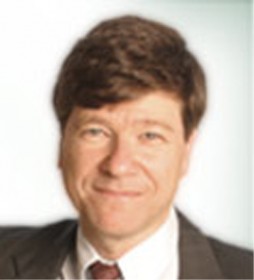– Jeffrey D. Sachs is Professor of Economics and Director of the Earth Institute at Columbia University. He is also a Special Adviser to United Nations Secretary-General on the Millennium Development Goals.
By Jeffrey D. Sachs

NEW YORK – The G-8’s $20 billion initiative on smallholder agriculture, launched at the group’s recent summit in L’Aquila, Italy, is a potentially historic breakthrough in the fight against hunger and extreme poverty. With serious management of the new funds, food production in Africa will soar. Indeed, the new initiative, combined with others in health, education, and infrastructure, could be the greatest step so far toward achieving the Millennium Development Goals, the internationally agreed effort to reduce extreme poverty, disease, and hunger by half by 2015 .
During 2002-2006, I led the United Nations Millennium Project, which aimed to achieve the Millennium Development Goals, for then-UN Secretary General Kofi Annan. One cornerstone of the project was “smallholder farmers,” meaning peasant farm families in Africa, Latin America, and Asia – working farms of around one hectare (2.5 acres) or less. These are some of the poorest households in the world, and, ironically, some of the hungriest as well, despite being food producers.
They are hungry because they lack the ability to buy high-yield seeds, fertilizer, irrigation equipment, and other tools needed to increase productivity. As a result, their output is meager and insufficient for their subsistence. Their poverty causes low farm productivity, and low farm productivity reinforces their poverty. It’s a vicious circle, technically known as a poverty trap.
The UN Millennium Project’s Hunger Task Force, led by two world-leading scientists, M. S. Swaminathan and Pedro Sanchez, examined how to break this vicious circle. The Hunger Task Force determined that Africa could substantially increase its food production if help was given to smallholder farmers, in the form of agricultural inputs. The Millennium Project recommended a big increase in global funding for this purpose. Drawing on that work and related scientific findings, Annan launched a call in 2004 for an African Green Revolution, based on an expanded partnership between Africa and donor countries.
Many of us, notably current UN Secretary General Ban Ki-moon, have worked hard to make this possible, with Ban repeatedly emphasizing the special emergency arising from the global food, financial, and energy crises of the past two years. The G-8 announcement reflects these years of effort, and of course the boost from the leadership of US President Barack Obama, Spanish Prime Minister Jose Luis Zapatero, Australian Prime Minister Kevin Rudd, World Bank President Robert Zoellick, European Commissioner Louis Michel, European Parliamentarian Thijs Berman, and others.
Now the key is to make this effort work. The lessons of history are clear. Getting seed and fertilizer to smallholder farmers at highly subsidized prices (or even free in some cases) will make a lasting difference. Not only will food yields rise in the short term, but farm households will use their higher incomes and better health to accumulate all sorts of assets: cash balances, soil nutrients, farm animals, and their children’s health and education.
That boost in assets will, in turn, enable local credit markets, such as micro-finance, to begin operating. Farmers will be able to buy inputs, either out of their own cash, or by borrowing against their improved creditworthiness.
A consensus has now been reached on the need to assist smallholders, but obstacles remain. Perhaps the main risk is that the “aid bureaucracies” now trip over each other to try to get their hands on the $20 billion, so that much of it gets taken up by meetings, expert consultations, overhead, reports, and further meetings. “Partnerships” of donors can become an expensive end in themselves, merely delaying real action.
If donor governments really want results, they should take the money out of the hands of thirty or more separate aid bureaucracies and pool it in one or two places, the most logical being the World Bank in Washington and the International Fund for Agricultural Development (IFAD) in Rome. One or both of these agencies would then have an account with several billion dollars.
Governments in hunger-stricken regions, especially Africa, would then submit national action plans that would provide details on how they would use the donor funds to get high-yield seeds, fertilizer, irrigation, farm tools, storage silos, and local advice to impoverished farmers. An independent expert panel would review the national plans to verify their scientific and managerial coherence. Assuming that a plan passes muster, the money to support it would quickly be disbursed. Afterward, each national program would be monitored, audited, and evaluated.
This approach is straightforward, efficient, accountable, and scientifically sound. Two major recent success stories in aid have used this approach: the Global Alliance on Vaccines and Immunizations, which successfully gets immunizations to young children, and the Global Fund to Fight AIDS, TB, and Malaria, which supports national action plans to battle these killer diseases. Both have saved millions of lives during the past decade, and have paved the way to a new more efficient and scientifically sound method of development assistance.
Not surprisingly, many UN agencies and aid agencies in rich countries fight this approach. All too often, the fight is about turf, rather than about the most effective way to speed help to the poor. Obama, Rudd, Zapatero, and other forward-thinking leaders can therefore make a huge difference by following up on their pledges at the G-8 and insisting that the aid really works. The bureaucracies must be bypassed to get help to where it is needed: in the soil tilled by the world’s poorest farm families.





